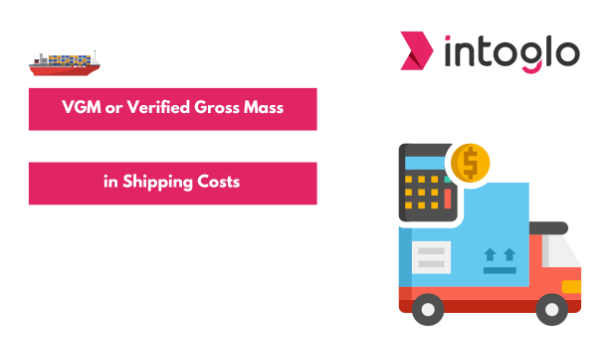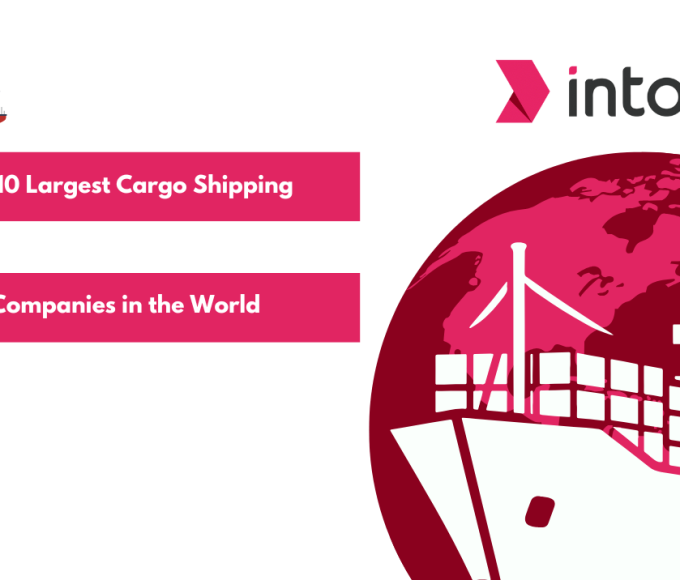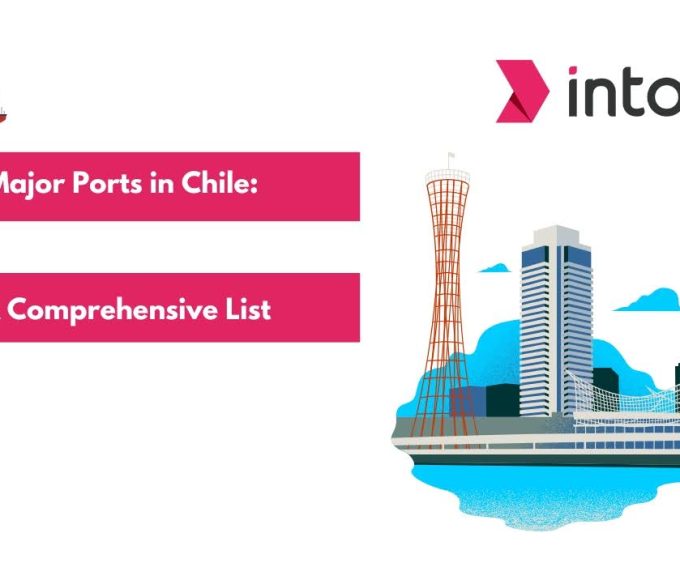Understanding the Verified Gross Mass (VGM) is crucial for accurate freight charges and compliance with international regulations in global shipping. Verified Gross Mass (VGM) represents a shipping container’s combined weight and cargo. The International Maritime Organization (IMO) requires shippers (the party responsible for arranging the shipment) responsible for organizing the shipment to provide the VGM before loading the container onto a vessel. This requirement ensures the safety of ships, crew, and cargo by preventing overweight containers that could compromise stability during transit.
Accurately calculating and reporting the VGM is about more than just meeting legal obligations; it directly impacts shipping costs. Inaccurate or missing VGM information can lead to delays, penalties, and additional handling charges.
This article will explain VGM, why it’s important, and how it influences shipping expenses. By understanding VGM charges in shipping, you can optimize your logistics process, avoid unnecessary costs, and ensure smooth sailing for your shipments.
Key Components of VGM
Regarding Verified Gross Mass (VGM) in shipping, understanding its key components is essential for ensuring compliance and maintaining efficiency in the supply chain. Here are some of the crucial elements of VGM:
1. Weight of Cargo: The first component is the weight of the cargo itself, which includes all items packed inside the container. Accurate measurement is vital to ensure that the declared weight aligns with the actual weight to avoid discrepancies.
2. Container Tare Weight: This refers to the weight of the empty container. Each container has a specific tare weight, usually indicated on the door. Adding this to the cargo weight gives the gross weight.
3. Packaging and Dunnage: Any packaging materials, such as pallets, crates, or other dunnage used to secure the cargo inside the container must also be weighed and included in the VGM. These materials contribute to the overall mass and must be noticed.
4. Weighing Methods: Two acceptable methods for obtaining the VGM are weighing the packed container as a whole or weighing the cargo and contents separately and then adding the container’s tare weight. Both methods require certified and calibrated weighing equipment to ensure accuracy.
5. Documentation and Certification: Once the VGM is determined, the shipper must document and certify it. This certification is then provided to the carrier and terminal operator before loading the container onto the vessel. Accurate documentation is crucial to prevent delays and penalties.
These components work together to ensure that the VGM charges in shipping are accurately calculated and reported, thereby preventing safety risks and ensuring compliance with international regulations.
Also Read: Guide to Understanding What is a Container Yard
Importance of Reporting VGM
Reporting Verified Gross Mass (VGM) is a critical aspect of global shipping that serves multiple importance:
- Prevention of Accidents: Accurate VGM reporting is crucial for preventing sea and port accidents. Overloaded or improperly balanced containers can cause ships to become unstable, leading to capsizing or other severe incidents. Ensuring the VGM is reported correctly minimizes these risks and protects lives, vessels, and cargo.
- Compliance with International Maritime Regulations: The International Maritime Organization (IMO) requires VGM reporting under its Safety of Life at Sea (SOLAS) regulations. Failing to comply can lead to substantial fines, legal complications, and container refusals at ports. Following these regulations is important not only to prevent penalties but also to uphold the integrity of the global shipping industry.
- Ship Stability and Safe Navigation: Proper VGM reporting contributes to a ship’s overall stability. Knowing cargo’s precise weight and distribution allows for better planning and safer navigation, especially in challenging weather conditions. It ensures ships can operate efficiently and safely, reducing the likelihood of maritime disasters.
- Efficiency and Accountability in Global Shipping: Accurate VGM reporting streamlines operations by allowing for better planning and resource allocation. It also enhances accountability, as shippers are responsible for providing precise weight information. This transparency leads to more efficient cargo handling, reducing delays and associated costs.
- Impact on Cargo Handling and Delivery Costs: VGM directly influences cargo handling and delivery costs. Accurate reporting ensures no unexpected charges due to weight discrepancies, contributing to more predictable and manageable shipping expenses.
Companies like Intoglo, which offer transparent pricing for port charges, can help shippers avoid hidden fees and ensure that the shipping process is cost-effective and transparent.
By emphasizing these aspects, it becomes clear that accurate VGM reporting is not just a regulatory requirement but a cornerstone of safe, efficient, and cost-effective global shipping.
Methods for Determining VGM
There are two primary methods for determining the VGM charges in shipping. Both of these are recognized under the International Maritime Organization (IMO) regulations:
Method 1: Weighing the Packed Container (Direct Method)
This method involves weighing the packed container using calibrated and certified equipment. The weight obtained includes the cargo, packaging materials, and container. This approach is straightforward and ensures that the total weight of the container is accurately captured. It’s often used in facilities with access to large, certified scales, such as weighbridges or specialized container handling equipment. The direct method is typically preferred when the shipper has easy access to such weighing equipment, ensuring the process is accurate and compliant.
Method 2: Weighing the Cargo and Contents Separately (Calculation Method)
The second method of calculating VGM charges in shipping calculates the VGM by separately weighing all individual items, including the cargo, packaging, and dunnage. After obtaining these individual weights, the container’s tare weight (marked on the container door) is added to the total.
This method benefits situations where you can’t weigh the packed container directly. You need to weigh each component precisely to ensure the final calculated VGM is accurate. You often use this method when packing the container at multiple locations or when direct weighing facilities aren’t available.
Here’s the formula:
VGM= Weight of Cargo + Packaging Materials + Dunnage+Tare Weight of the Container
Both methods rely on calibrated and certified equipment to assure accuracy and conformity with international laws. Accurate VGM determination is crucial for safe shipping practices, as it helps prevent overloading and provides the vessel’s stability during transit.
Emerging Costs of VGM Compliance
As global shipping regulations tighten, the costs associated with Verified Gross Mass (VGM) compliance have become increasingly significant. Shippers and logistics providers must account for emerging expenses to ensure accurate VGM reporting and avoid penalties.
- Terminal Operator Services and Fees
Many terminal operators now offer VGM weighing services, particularly for shippers who lack the necessary equipment. While convenient, these services come at a cost, which can vary depending on the terminal. These fees are often added to the shipping expenses, making it essential for shippers to budget.
- Forwarders’ Fees for VGM Certificates
Freight forwarders often assist shippers in obtaining and submitting VGM certificates. While this service is valuable, it incurs additional fees. Forwarders may charge for the administrative work involved in verifying, documenting, and transmitting the VGM, adding to the overall cost of compliance.
- Potential Additional Costs for Demurrage or Storage
Delays in VGM submission can lead to additional costs, such as demurrage or storage fees. Suppose you did not report the container’s VGM on time. In that case, it may not be loaded onto the intended vessel, resulting in extended storage times and potential penalties from the port or terminal.
- Compliance and Practical Considerations in Cost Management
Managing these emerging costs requires careful planning and collaboration with logistics partners. Companies like Intoglo, which emphasize transparent pricing for port charges, can help shippers navigate these expenses more effectively, ensuring that VGM compliance does not lead to unforeseen financial burdens.
Responsibilities in Reporting VGM
Accurate and timely reporting of the Verified Gross Mass (VGM) is critical in the shipping process. The obligations extend across multiple parties, with clear procedures to ensure compliance and safety.
- Shipper’s Obligation to Measure and Report VGM
The shipper (the party responsible for arranging the shipment) is primarily responsible for measuring and reporting the VGM. This involves accurately weighing the packed container or its components and correctly calculating the VGM. The shipper must certify this information before submitting it to the carrier and terminal operator.
- Process of Submitting VGM to Carrier and Terminal Operator
Once the VGM is determined, it must be submitted to the carrier and the terminal operator before loading the container onto the vessel. This submission is typically done electronically and must be completed within the deadlines set by the carrier to avoid delays or rejection of the container.
- Handling and Notification of Changes in Submitted VGM Data
If any changes to the VGM data occur after submission, such as reweighing or repacking, the shipper must promptly notify the carrier and terminal operator. Accurate record-keeping and communication are essential to ensure that the latest VGM is always on file, preventing discrepancies that could lead to safety risks or compliance issues.
By understanding these responsibilities, shippers can ensure their VGM reporting is accurate and compliant, avoiding potential legal and operational challenges.
Also Read: Benefits and Types of Export Finance
Consequences of Inaccurate VGMs
Inaccurate reporting of VGM in shipping can have significant and far-reaching consequences. These impacts affect the immediate shipment and can have broader implications for safety, compliance, and costs within the global supply chain. Here are some of the key consequences:
1. Safety Risks
Safety risk is one of the most critical consequences of inaccurate VGM reporting. If the actual weight of a container is higher or lower than reported, it can lead to improper stacking and load distribution on the vessel. This imbalance can cause containers to shift, leading to accidents such as containers falling overboard, damaging the vessel, or even capsizing. The safety of the crew, the vessel, and other cargo onboard is at serious risk due to inaccurate VGMs.
2. Non-Compliance with Regulations
International maritime regulations, such as those mandated by the International Maritime Organization (IMO), require that the VGM be accurately reported. Failure to comply with these regulations can result in severe penalties, including fines and the refusal of containers at the port. Non-compliance also damages the shipper’s reputation and can lead to increased scrutiny of future shipments.
3. Operational Delays
Inaccurate VGMs can cause significant delays in the shipping process. If someone questions or finds a container’s VGM incorrect, they may wait to load until you reweigh it and report the correct VGM. This delay can disrupt the entire shipping schedule, leading to missed deadlines, delayed deliveries, and additional costs for demurrage or storage.
4. Increased Costs
Beyond regulatory fines, inaccurate VGM reporting can lead to various cost-related consequences. These can include the costs associated with reweighing the container, additional handling fees, and potential cargo damage due to improper handling. Sometimes, the entire shipment may need to be rerouted or rescheduled, incurring further expenses.
5. Damage to Relationships with Carriers and Ports
Accurate VGM reporting is crucial for maintaining good relationships with carriers and port operators. Inaccurate VGMs can cause disruptions that affect the shipper’s cargo and other shipments on the same vessel. It can lead to strained relationships with carriers and ports, potentially affecting future business agreements and services.
6. Legal Liability
In cases where an inaccurate VGM leads to accidents or damages, the shipper may be held legally liable. It could result in costly legal disputes, compensation claims, and damage to the shipper’s reputation in the industry. Incorrect VGM information could lead to legal repercussions, including personal injury claims if it harms crew members or port workers.
You cannot overstate the importance of accurate VGM charges in shipping. Ensuring precision in VGM calculations and reporting keeps the supply chain running smoothly and safeguards lives, assets, and the integrity of the global shipping industry.
Conclusion
Understanding and accurately reporting the VGM charges in shipping is crucial for ensuring global shipping operations’ safety, efficiency, and compliance. Inaccurate VGMs can lead to severe consequences, including safety hazards, regulatory penalties, and increased costs. By adhering to VGM regulations, shippers ensure the smooth and secure transportation of commodities in international waters.
For businesses involved in FCL shipments from India to the USA, working with a logistics partner like Intoglo can make a significant difference. Intoglo is committed to strict VGM compliance, ensuring that every shipment is accurately weighed and documented, avoiding potential delays and penalties. Our expertise in managing port charges and providing transparent pricing further enhances the efficiency and reliability of the shipping process.









Leave a comment